Come Together Page 3
After the Dolby Digital, DTS, and 96/24 stereo and multichannel audio mastering are complete (and approved by the artist), video materials are edited, photo galleries are lined up, and the menus are designed. All of those elements are sent to the authoring engineers. The authoring process is fairly complex and frequently employs the skills of at least three or four engineers. It's a team effort. I spoke with Craig Anderson of Craigman Digital, Inc; he's worked on a number of projects for Warner, Elektra, and Atlantic.
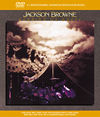 "Craig, with so much going on, what's the hardest part?"
"Craig, with so much going on, what's the hardest part?"
"The menus. When there are something on the order of 300 to 500 menu pages on a disc, changes are inevitable—spelling mistakes, credit changes, art revisions—so the menus are usually the most fluid element."
I get the distinct impression that Anderson revels in the possibilities of the format when he says, "I'd love to see what a producer/musician like Brian Eno could do with it. This format could be so much more of a multimedia show; and, with well-designed Easter eggs, you could have a different experience every time you watch the disc. In the not-too-distant future, I'm sure we'll see a lot more creative ideas that really push the limits of the format."
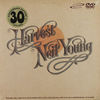 After Anderson signs off on a project and sends his stuff to the plant, all that's left to do is to finalize the packaging and associated artwork.
After Anderson signs off on a project and sends his stuff to the plant, all that's left to do is to finalize the packaging and associated artwork.
After I've heard from just about everybody, I returned to Hurley for a parting shot: "All it's going to take is just two or three really big sellers to grab the public's attention and move the format's focus from magazines like Home Theater to Rolling Stone." I agree, and creative marketing ideas, like the 5.1 Entertainment Group's innovative packaging of Dishwalla's DVD-Audio single Somewhere in the Middle with the band's Opaline compact disc release may do just that. The format has gear potential; and, now that the record industry is backing up its words with real action, DVD-Audio's future is starting to look as good as it sounds.
The ex-Grateful Dead drummer is a die-hard supporter of DVD-Audio.
SG: Mickey, why are you so gung-ho about surround?
MH: It's like a breath of fresh air. Just think of the geographic advantages: Six speakers instead of just two opens up our perception of recorded sound. I'm a drummer, so I'm used to being in the middle of the band. It's very much like a surround situation. So when I'm producing, I want that sort of intimate connection—physically and psychoacoustically—with the music. Unfortunately, a lot of people making DVD-Audios don't know their way around the new topography of 5.1, but I always try to approach it musically. I don't want to just throw sounds at the speakers.
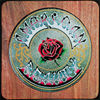 SG: Surround's palate is bigger.
SG: Surround's palate is bigger.
MH: As a musician, and as a human, I hear in 360 degrees, so when I bring music down to two speakers, it limits the ear play.
SG: Damn straight! But don't you think the acoustic properties of the studio are crucial to producing great-sounding surround recordings?
MH: I try to get different kinds of acoustic spaces that are musically meaningful and not gimmicky. The music should take me into the space. My own studio is enormous; it's 100 by 50 by 30 feet. I built it to record 5.1.
SG: What's the difference between working on new stuff and your musical archeology work on reissues?
MH: When I remixed the Grateful Dead's American Beauty and Workingman's Dead to 5.1, that's archival work. Producing in 5.1, rather than just remixing stereo to 5.1, opens up new soundscapes. I record and compose in 5.1. I like to place the instruments in the studio as they will appear on the mix, so it's not an afterthought. There's no after-the-fact manipulation on my new recordings, like Kodo Mondo Head.
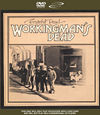 SG: Why do you think some folks are put off by surround?
SG: Why do you think some folks are put off by surround?
MH: Here's what I think is going on: When music comes from behind, it trips the fight-or-flight mechanism in our brains. Until you get used to hearing sound that way, it can be unnerving.
SG: What about the oft-neglected sixth-sense channel, the .1?
MH: Are you kidding? All frequencies are important, but I carefully sculpt my low end. The subwoofer is one of my main interests because that's the most dangerous sound. I use Meyers speakers, so I really know what's going on under 100 hertz.
SG: It seems like a lot of mixers either ignore the sub altogether or just sum the under-80-hertz info from all of the channels and send it to the sub.
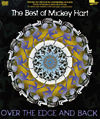 MH: It's wild down there and hard to handle, so I always check the mix by cutting off all of the monitors except the sub. I can't tell you how important that is. It takes a lot of time; but, since I own my own facility, I'm not watching the clock, so I can spend as much time as I want on these things.
MH: It's wild down there and hard to handle, so I always check the mix by cutting off all of the monitors except the sub. I can't tell you how important that is. It takes a lot of time; but, since I own my own facility, I'm not watching the clock, so I can spend as much time as I want on these things.
SG: Mickey, you're Mr. 5.1!
MH: I love 5.1. I have it in almost every room of my house. I'm putting it in my boat; and, as we speak, my car is being fitted for 5.1 and satellite radio.
SG: Thanks!





















































